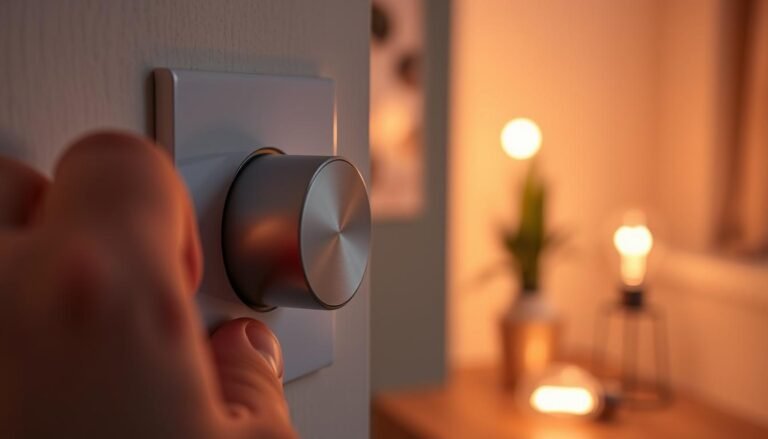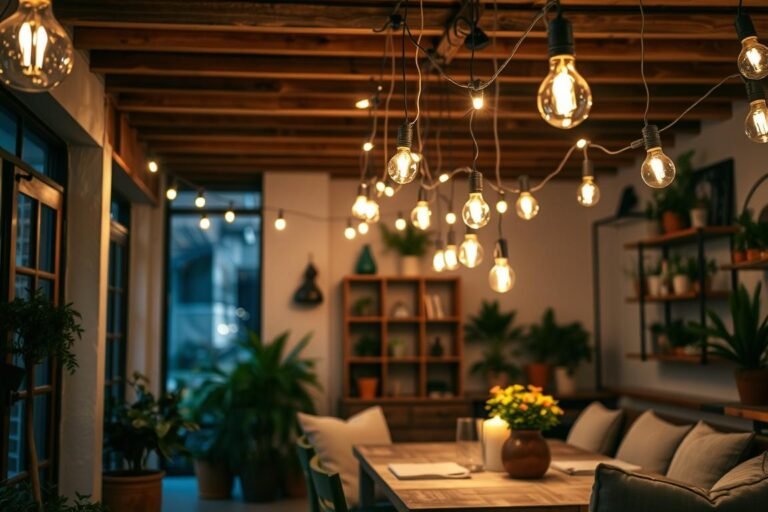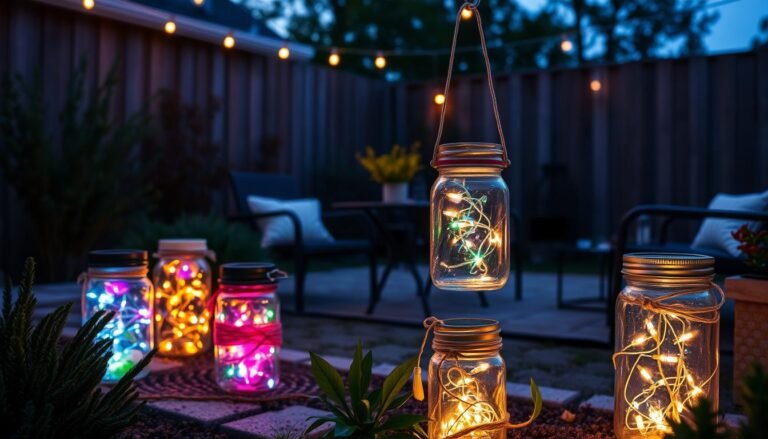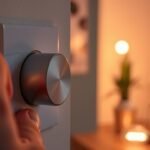Affiliate Disclosure: This post may contain affiliate links. If you make a purchase, we may earn a small commission at no extra cost to you.
Are you tired of the same old light switch in your home? There are many options to choose from to make your home look better and work better. You can pick from classic toggle switches to the latest smart technology. But which one will be best for you?
Key Takeaways
- Understand the diverse range of light switch types, including toggle, rocker, slider, and push-button options.
- Explore the differences between single-pole, double-pole, three-way, and four-way light switches.
- Learn about the latest smart and dimmer light switch technologies for added convenience and energy efficiency.
- Discover specialty light switches, such as motion sensor and combination options, to suit your unique preferences.
- Gain insights to help you make an informed decision when selecting the right light switches for your home.
Check out our FREE Calculators on our Resources Page
Introduction
Choosing the right light switch can change how your space looks and works. You can pick from many types, like toggle, rocker, slider, and push-button switches. Each type has its own look and function.
We’ll look at the main types of light switches and what makes them special. Knowing the differences will help you pick the best switch for your home.
Toggle and Rocker Light Switches
Toggle and rocker switches are the most common types. They’re easy to use and install, making them great for home lighting.
- Toggle Switch: This switch has a small lever that flips up or down to turn the lights on and off. It’s simple and reliable for most homes.
- Rocker Switch: Like the toggle switch, but with a larger, easier-to-use paddle. Rocker switches look modern and sleek.
Both toggle and rocker switches are easy to replace. This lets homeowners update their lighting without spending a lot or redoing their space.
Toggle and Rocker Light Switches
Toggle and rocker switches are two common types of light switches. They both control your home’s lighting well but have different designs and functions.
Toggle Switch
The toggle switch has a classic design with a small lever. You flip it up or down to turn the light on or off. Toggle light switches are easy to use and popular with many homeowners. They come in various finishes to match your home’s style.
Rocker Switch
Rocker light switches have a smooth, rounded design. You press the paddle up or down to turn the light on and off. They look modern and are easy to use, especially for those with limited hand strength.
Both toggle and rocker switches are easy to find in many styles. Whether you like the classic look of a toggle or the modern feel of a rocker, there’s a switch for you. These switches make controlling your home’s lighting simple.

Slider and Push-Button Light Switches
There are many styles of light switches, each with special features. Slider light switches and push-button light switches are two popular ones. They give homeowners more control over their lights.
Slider Switch
A slider light switch has a horizontal slider you move up or down. This changes the light’s brightness. You can also turn the light on and off by sliding it to the bottom.
Slider switches make controlling light easy and smooth. They’re great for bedrooms, living rooms, and areas where you need different lighting. Adding them can make your home look stylish and work better.
Push-Button Switch
Push-button switches have a button you press to turn lights on and off. Some can also change the light’s brightness or switch between modes.
These switches are perfect for kitchens, hallways, and places where easy control is key. They add a modern touch to your home’s specialty light switch styles.
Choosing between a slider light switch or a push-button light switch can give your home a unique look. By looking at all the options, you can find the best fit for your lighting needs and style.
Single-Pole Light Switches
The single-pole switch is the most common type of light switch. It’s used in both homes and businesses to control one light or appliance. These switches are simple and effective, making them a favorite among homeowners and contractors.
A single-pole switch gets power from the electrical panel and sends it to a single light or appliance. You can spot one by its ON/OFF symbols on the switch face. These switches have two brass screws and a green screw on the metal strap.

In homes, single-pole switches are the go-to for controlling one light source. They’re easy to put in and can be swapped out when needed. This makes them great for new builds and updates to existing places.
For wiring standard light switches, single-pole switches are key. Knowing how they work and how to install them is crucial for homeowners and DIY fans. It helps with electrical projects around the house.
Double-Pole Light Switches
Most homes have single-pole light switches, but some have double-pole ones too. These switches handle higher voltage and power big appliances like water heaters or air conditioners.
Double-pole switches are different from single-pole ones. They manage two hot wires and have four screw terminals. This setup lets them safely cut off 240-volt circuits, which have two “hot” wires. They also have a green grounding screw for the circuit’s grounding wire.
Double-pole double-pole light switches are not as common in homes as single-pole ones. But, if your home has 240-volt 240-volt light switch circuits for big appliances, you’ll find a double-pole switch there.

Working with double-pole switches requires the same safety steps as any electrical task. Make sure the power is off and check that the circuit is safe before you start. If you’re not sure about 240-volt circuits, it’s best to get help from a licensed electrician.
Three-Way Light Switches
Have you ever tried to turn on a light at the top of the stairs, but it didn’t work? That’s when you need a three-way light switch. These switches let you control one light or appliance from two places, like the stairs’ top and bottom.
Three-way switches come in pairs, one for each end of the circuit. They have three screws for connecting to the panel, another switch, and the light or appliance. They also have a green screw for the grounding wire.
These switches are great for homes with many ways to enter a room. With two switches, you can turn the same light on or off from anywhere. This is super useful in places like garages, basements, stairwells, and hallways.
When building or updating your home, think about adding three-way light switches. They let you control your lights from multiple locations easily. This simple change can make your home’s lighting much more convenient.

In short, three-way light switches are perfect for controlling lights from multiple locations in your home. With two switches, you can manage one light or appliance from two spots. This makes your home more user-friendly and efficient.
Four-Way Light Switches
Four-way light switches are not as common as three-way ones but are vital for controlling lights from many places. They are perfect for long hallways or rooms with several entrances. With these switches, you can turn a light on or off from three or more spots.
The four-way switch acts as a middleman for the traveler wires between three-way switches. When you flip any switch, it will either turn the light on or off. This lets you control your lighting from different spots, making life easier and more flexible.
First, let’s talk about three-way switches. They let you control a light or appliance from two spots. Four-way switches take this to the next level, adding a third spot for control.
Four-way switches have four terminals and a ground terminal, unlike three-way switches with three terminals and a ground. The four-way switch helps power move between three-way switches to turn things on or off.
Adding four-way light switches to your home means you can control lights from many places. This is super useful in big rooms, hallways, or areas with many entrances. It lets you manage your lighting from wherever it’s easiest.

Smart Light Switches
Smart light switches are changing the game in home automation. They let you control your lights easily and flexibly. You can use voice commands, smartphone apps, or touch controls to manage your home’s lighting.
Smart light switches work well with voice assistants like Alexa or Google Assistant. By linking your smart light switches with a voice system, you can easily turn lights on or off. You can also schedule them to turn on or off automatically. This makes controlling your lights hands-free and adds a futuristic touch to your home.
Not only can you control your lights with voice commands, but you can also use app-controlled light switches. With a mobile app, you can check energy usage, set lighting schedules, and control your lights from anywhere. This can help you save energy and set the right mood for any event.
Keep in mind, smart light switches need a neutral wire connection in the electrical box. Sometimes, you’ll need to upgrade your circuit for these switches. But, some smart light switches can connect wirelessly through a hub, avoiding the need for a neutral wire.
Exploring smart home tech, smart light switches make your lighting system more convenient and functional. They let you control your lights with voice, apps, or touch. These devices change how you interact with your living space.

Dimmer Light Switches
Dimmer light switches are a great way to make your lighting more versatile and save energy. They let you easily change the brightness of your lights. This creates a cozy feel for relaxing or a bright atmosphere for work or fun.
Rotary Dimmer Switch
The rotary dimmer switch is a popular choice. It has a circular knob you turn to adjust the light. These switches give you precise control over the brightness, making it easy to find the perfect level. They fit well with traditional or vintage decor, adding to your home’s style.
Sliding Dimmer Switch
Sliding dimmer switches are another option. They have a linear slider you move up or down to change the light. These switches have a modern look that fits well with contemporary designs. With just a finger slide, you can set the mood for a movie or brighten the room for work.
Adding dimmer light switches to your home lets you control your lighting better and save energy. Whether you like the classic look of a rotary dimmer or the modern feel of a sliding dimmer switch, these controls can change the look and feel of any room.

Motion Sensor Light Switches
Motion sensor light switches, or occupancy sensor light switches, are smart and save energy. They have built-in motion detectors. These turn the lights on when you enter a room and off when you leave, saving energy and cutting down on bills.
These switches are great for rooms like bathrooms, hallways, and closets. The lights stay on for a while after you move, then turn off to save energy. Some can even tell when it’s daylight, so they only turn on when needed.
Motion sensor light switches also make life easier and safer. You don’t have to turn the lights on and off. They’re perfect for people who have trouble moving around. And they can make your home safer by lighting up when someone moves, scaring off intruders.
When picking motion sensor light switches, think about how far the sensor can detect motion, how sensitive it is, and how long it waits before turning off. Make sure they work with your wiring and lights. With the right motion sensor light switches, you get easy, automatic lighting controls at home.
In short, motion sensor light switches are a smart pick for saving energy and making life easier and safer. They control your lights based on if you’re there or not. This makes your home more efficient, cozy, and secure.
Specialty Light Switches
There are many specialty light switches that go beyond the basic on-off types. These switches offer unique features to make your home more convenient. They help control your lighting and appliances in new ways.
Timer Light Switches: These switches have timers built in. They can turn lights or appliances on and off automatically at set times. This is great for outdoor lighting. It lets you set your porch or pathway lights to turn on at dusk and off at dawn, even when you’re away.
Delay Light Switches: Delay switches stay on for a certain time after you turn them off. This is useful in places like hallways or stairwells. It ensures you have enough time to safely move around before the lights go out.
Fan Speed Controls: You can also control ceiling fan speed with these switches. This lets you adjust the airflow easily. It helps you control your home’s climate and comfort.
- Specialty light switches offer advanced features beyond basic on-off functionality.
- Timer switches automate the on/off cycle for lights and appliances.
- Delay switches keep lights on for a set time after being turned off.
- Fan speed controls allow you to adjust ceiling fan airflow with a switch.
Specialty light switches can improve your home’s lighting, save energy, and give you more control over your appliances. Look into the different options to find what suits your needs and tastes best.
Combination Light Switches
Combination light switches can change the game in your home’s electrical setup. They merge the functions of two devices, like a light switch and an outlet, into one. This saves space and makes your walls look better.
These switches are very versatile. For example, you can find ones with a light switch and a USB port. This is great for charging devices and controlling lights in one spot. It’s perfect for bedrooms, offices, or any area needing both functions.
Another type of combination switch has two light switches in one box. This is great for controlling different lights from one spot. It makes your home’s electrical setup simpler and looks better.
Combination light switches are a smart choice for optimizing your home’s electrical setup. They offer both practicality and style. With their ability to save space and improve functionality, they make your home look and work better.
When picking a combination light switch, think about what you need for your home. Some switches have extra features like dimming or smart home tech. Choose the one that fits your needs best. With the right switch, you get better organization, more functionality, and a nicer-looking home.
Types of Light Switches
Choosing the right lighting for your home can be exciting yet overwhelming. There are many light switch options available, from simple on/off controls to advanced automation and energy-saving features. This summary will guide you in picking the best switch that improves both the look and function of your home.
The different types of light switches include:
- Toggle and Rocker switches, providing simple manual control.
- Slider and Push-Button switches, offering a more streamlined, modern appearance.
- Single-Pole, Double-Pole, Three-Way, and Four-Way switches, catering to various wiring configurations and lighting control needs.
- Smart switches, integrating with home automation systems for remote and voice control.
- Dimmer switches, allowing you to set the perfect ambiance with adjustable lighting levels.
- Motion Sensor switches, automatically turning lights on and off based on movement detection.
- Specialty switches, designed for specific applications, such as timers and fan controls.
Whether you need to replace an old switch, update your home’s look, or add new features, this guide will help you find the right switch. It meets your home’s unique lighting needs.
Conclusion
The world of light switches is full of options to improve your home’s lighting control. You can pick from classic toggle and rocker switches to smart and dimmer ones. Each type has its own purpose and can make your living areas look better and work better.
When choosing the right light switch for your home, think about what you need, your electrical setup, and your style. If you’re unsure, talk to a professional electrician about light switch installation tips or upgrading your electrical system.
By picking the right light switch, you can make your life easier, save energy, and create a lighting setup that matches your home’s style and feel. Light switches offer a lot of flexibility, so you can make the most of your living areas.
FAQ
What are the different types of light switches?
What is the difference between a toggle and rocker light switch?
How do slider and push-button light switches work?
What is the purpose of a single-pole light switch?
How do double-pole light switches differ from single-pole?
When would you use a three-way or four-way light switch?
What are the benefits of a smart light switch?
How do dimmer and motion sensor light switches work?
What types of specialty light switches are available?
How do I choose the right light switch for my home?
Source Links
- https://www.thespruce.com/types-of-electrical-switches-in-the-home-1824672 – 12 Types of Light Switches and How to Choose
Check out our FREE Calculators on our Resources Page








